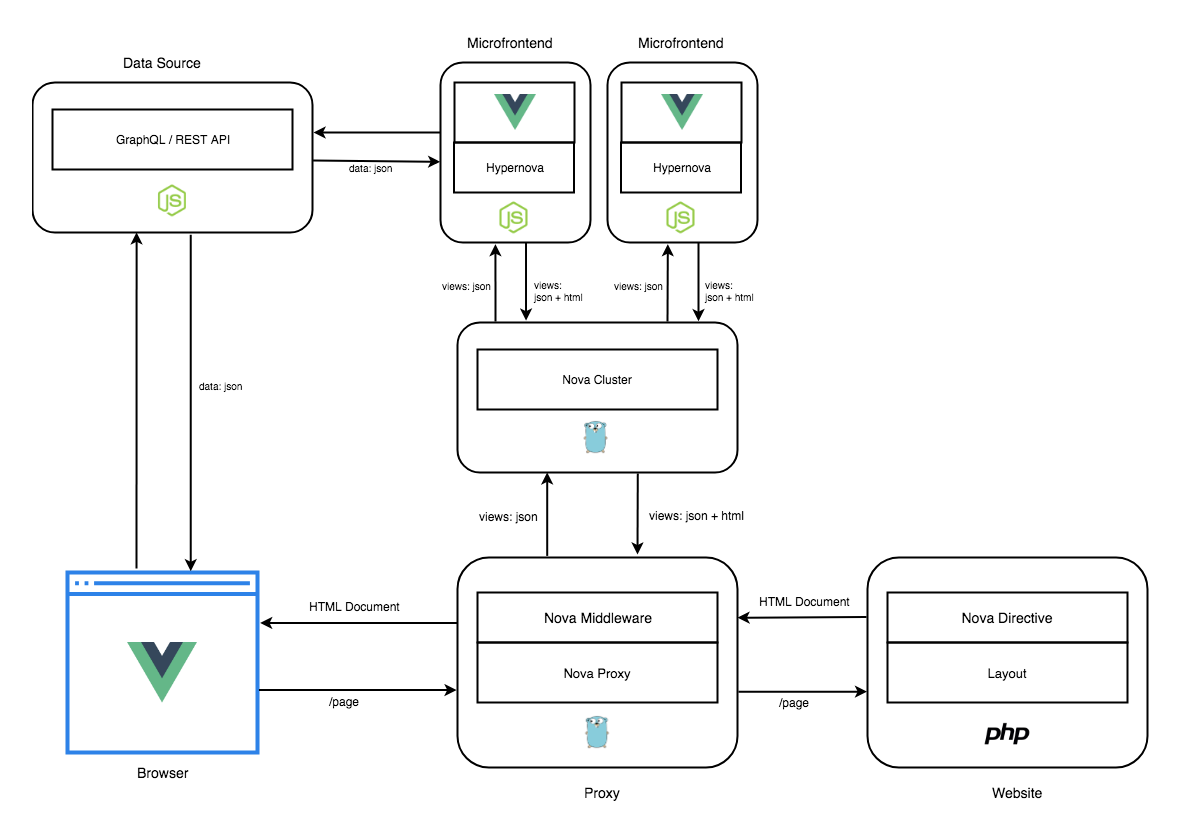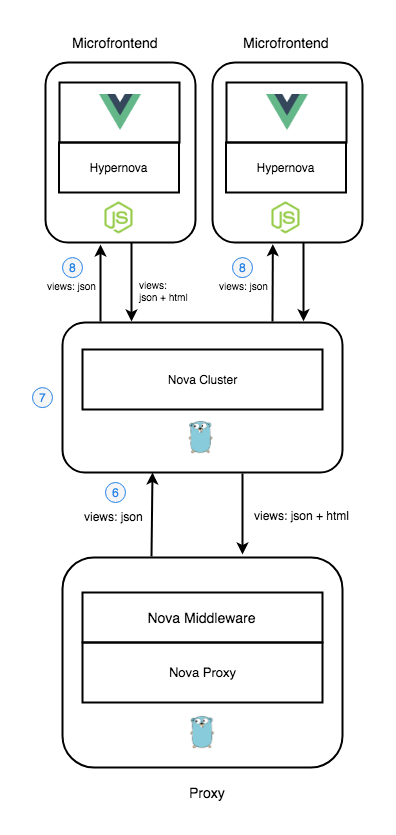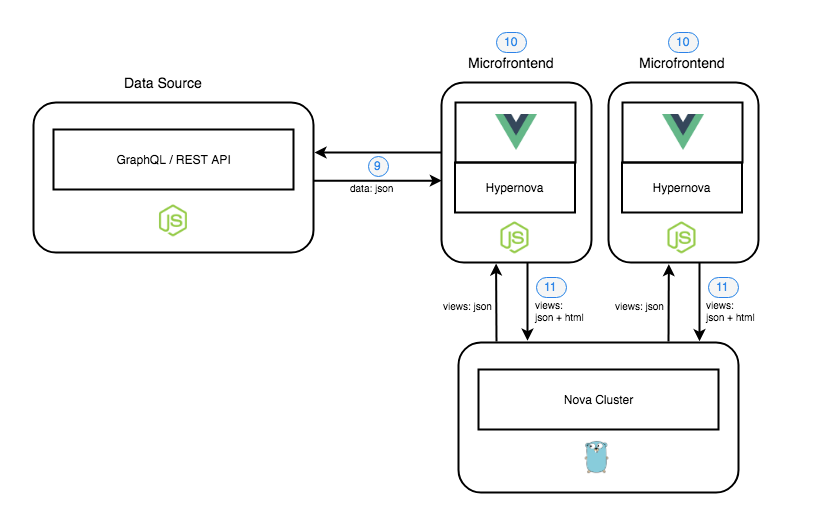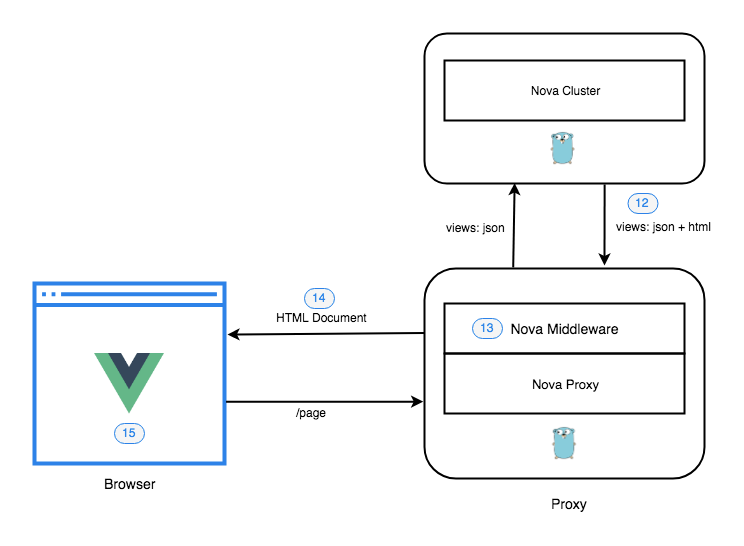The Nova architecture (Universal Rendering)
Nova came up as a base architecture to integrate Micro-frontends in any existing web framework regardless of what programming language it's built atop.

The Architecture consists mainly of four components:
Nova Bindings: These bindings enable Hypernova to render JavaScript views using any library for building UI interfaces such as React, Vue.js, Angular, Svelte, Preact, and Hyperapp.
Nova Directive: A directive renders a placeholder with necessary data for enabling Nova Proxy to request the Micro-frontend view and letting know in which part of the page should be displayed. It's the key component to integrate Micro-frontends in any web framework.
Nova Proxy and Middleware: It’s a proxy server for server-side include(SSI) Micro-frontends using transclusion. Nova Middleware parses the HTML generated for the Nova Directive in order to request the Micro-frontend views to Nova Cluster and include them inside the page.
Nova Cluster: It’s a Micro-frontends aggregator to enable consumers to ask for the views they want without know which Micro-frontend is responsible to render them.
Note: Nova Cluster is optional, Nova Proxy can resolve views using any Microfrontend (Nova) directly instead Nova Cluster. However, As we can see in the diagram it can only communicate with one Nova server.
How The Nova Architecture Works

A user requests a page to Nova Proxy.
Nova Proxy passes the request to the website server.
The website renders the placeholders where the Micro-frontends views should be displayed inside the page using the Nova Directive.
The website sends back the HTML generated to Nova Proxy.
Nova Proxy parses the HTML to gather all the information necessary to request the Micro-frontend views.

Nova Proxy makes a batch request to the Nova Cluster to get all the Micro-frontend views.
Nova Cluster creates a batch request for each involved Micro-frontend.
Nova Cluster makes a batch request to each Micro-frontend in parallel.

The Micro-frontends can gather all the necessary data to render the views from an external data source like a Rest API or GraphQL.
The Micro-frontends server-side render the views using the Hypernova Bindings based on the gathered data or using the one provided by the Nova Cluster.
The Micro-frontends send back the rendered views to Nova Cluster.

Nova Cluster aggregates the Micro-frontends responses and sends them back to Nova Proxy.
Nova Proxy replaces the placeholders with the HTML of the successful results and keeps the placeholders for the failed ones in order to enable the client-side scripts to renderer the views in the browser as a fallback.
Nova Proxy sends back the page to the user.
On the browser, JavaScript is used to progressively enhance the application and make it dynamic.
